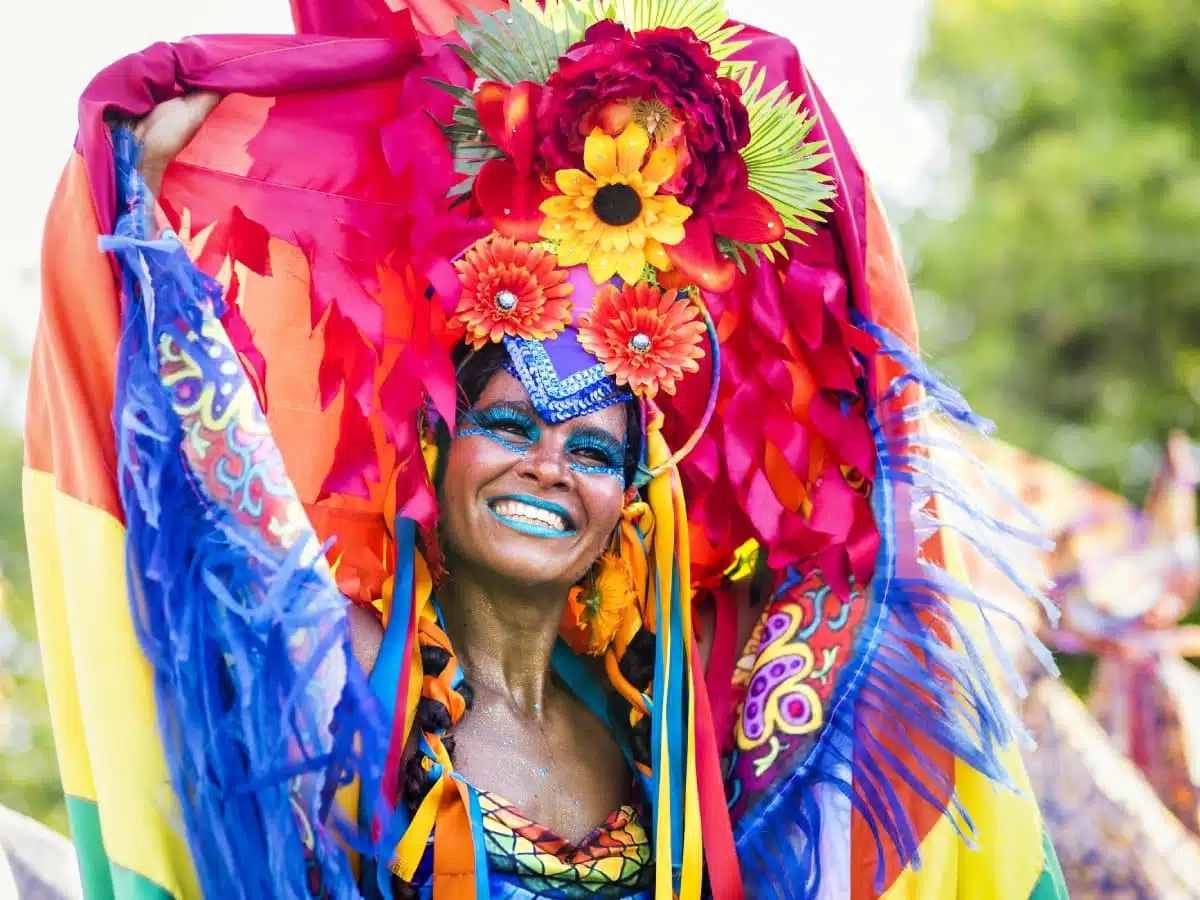Rio de Janeiro, a city nestled between lush mountains and the deep blues of the Atlantic, offers a vibrant tapestry of cultural experiences, natural wonders, and an indomitable spirit. Known for its breathtaking landscapes, iconic landmarks, and pulsating samba rhythms, Rio’s allure extends far beyond the famous Carnival. This guide discovers the heart of Rio’s cultural richness, exploring diverse activities and destinations that embody the city’s unique vibe. Each point provides a deeper understanding of Rio’s multifaceted charm, from historic neighborhoods and world-renowned beaches to art museums and culinary delights.
1. Christ the Redeemer and Corcovado Mountain
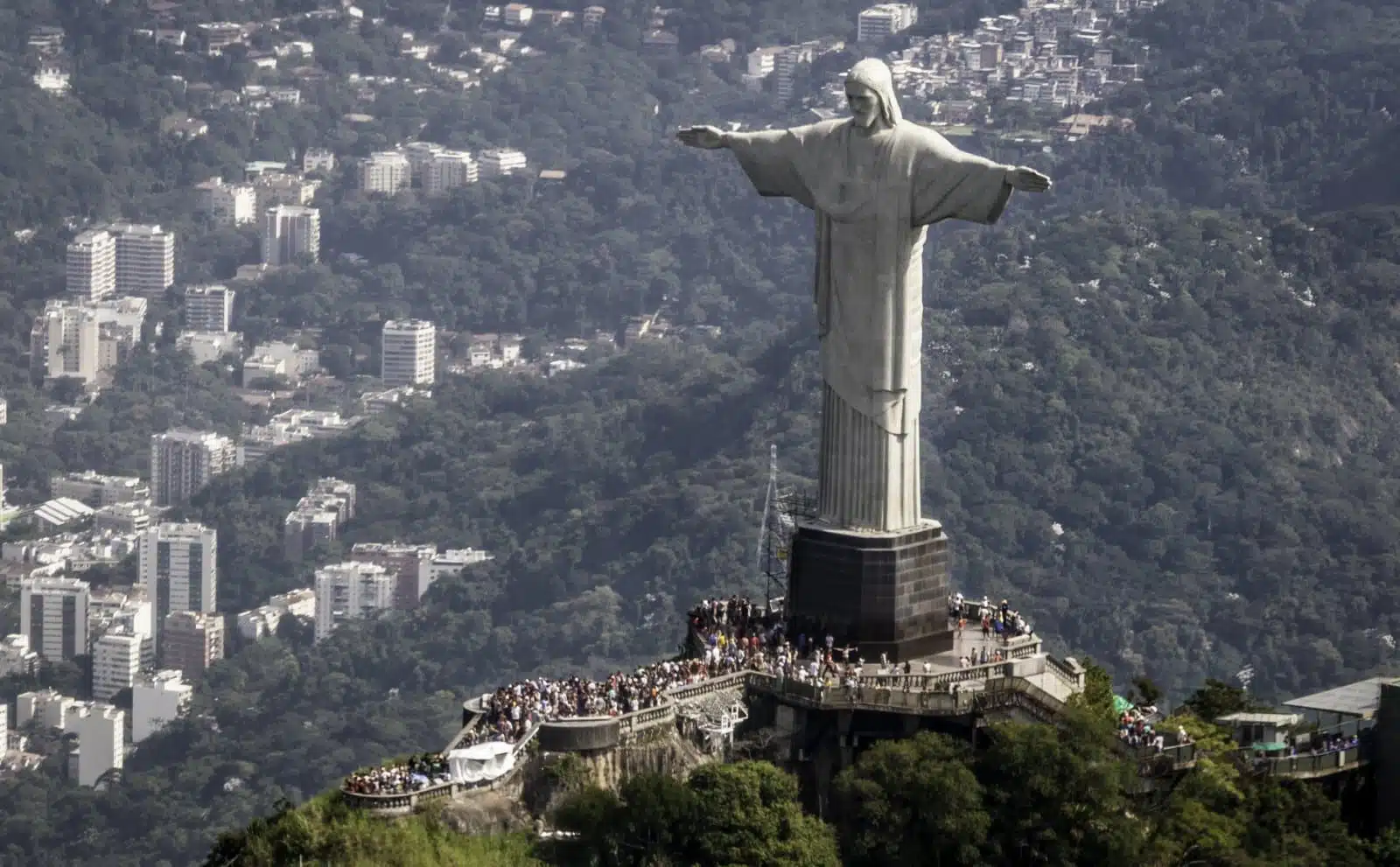
Image Credit: Shutterstock / Tiago Francisco
Perched atop the 710-meter Corcovado Mountain, the Christ the Redeemer statue symbolizes Rio. It is a global icon of peace and faith. This monumental statue, one of the New Seven Wonders of the World, offers panoramic views of the city, including the Sugarloaf Mountain, Copacabana, and the lush Tijuca Forest. The journey to the statue is an experience, with options to hike through the forest or ride the scenic tramway, each providing a unique perspective of Rio’s natural beauty.
Insider’s Tip: For a less crowded experience, aim to visit early in the morning or later in the afternoon. Booking tickets in advance for the tramway can save time and ensure a smoother trip.
2. Sugarloaf Mountain (Pão de Açúcar)
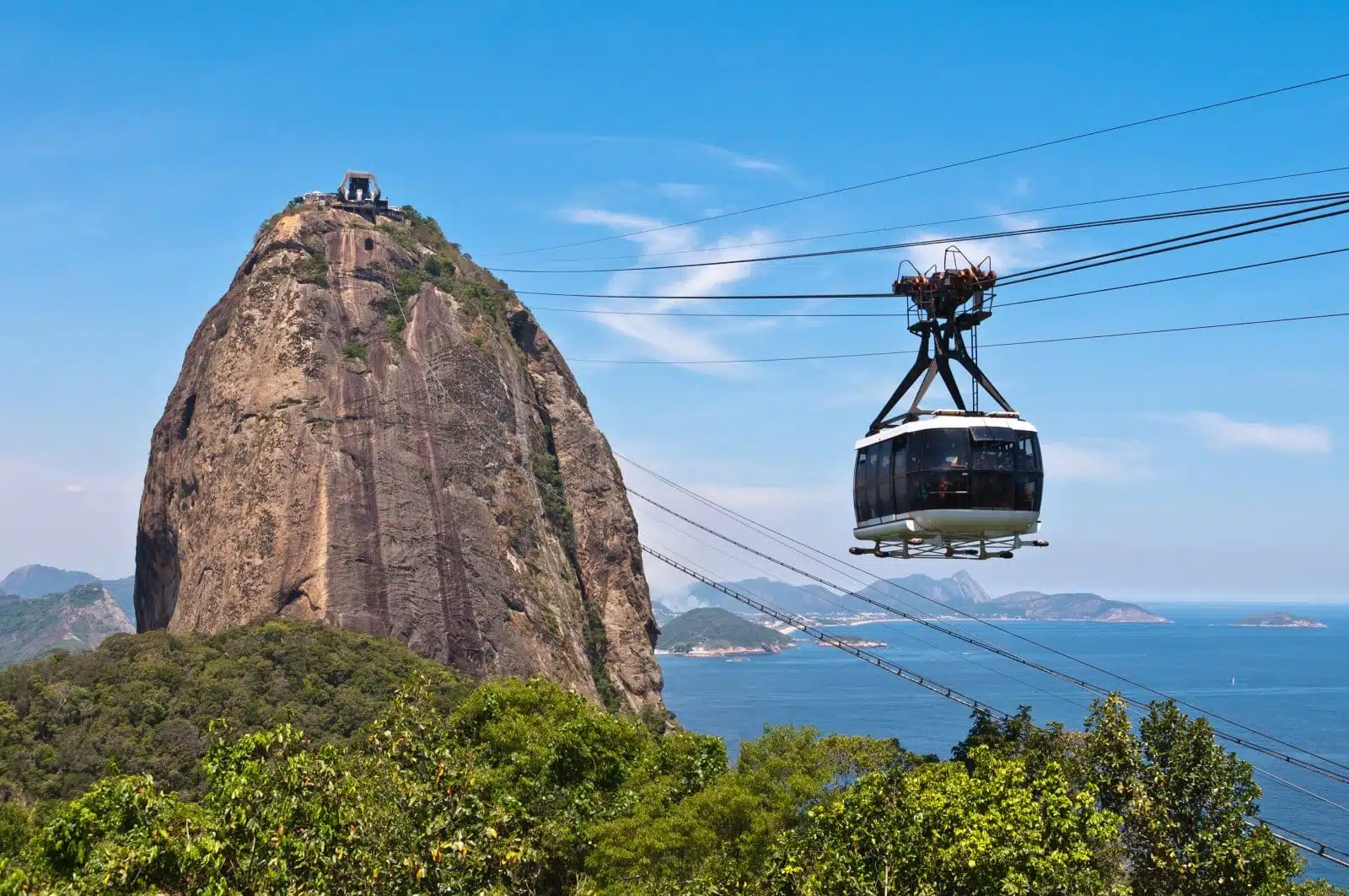
Image Credit: Shutterstock / Donatas Dabravolskas
Sugarloaf Mountain, rising 396 meters above the harbor, is another iconic landmark of Rio. The summit offers stunning views of the city, especially at sunset when Rio is bathed in golden hues. The ascent by cable car is a thrilling experience, with two stages: first to Morro da Urca and then to the peak of Sugarloaf. The surrounding area is a natural monument featuring diverse flora and fauna, making it a perfect spot for nature lovers and photographers.
Insider’s Tip: Consider visiting in the late afternoon to catch the sunset. The changing colors of the sky against the backdrop of Rio provide a breathtaking spectacle.
3. Copacabana and Ipanema Beaches
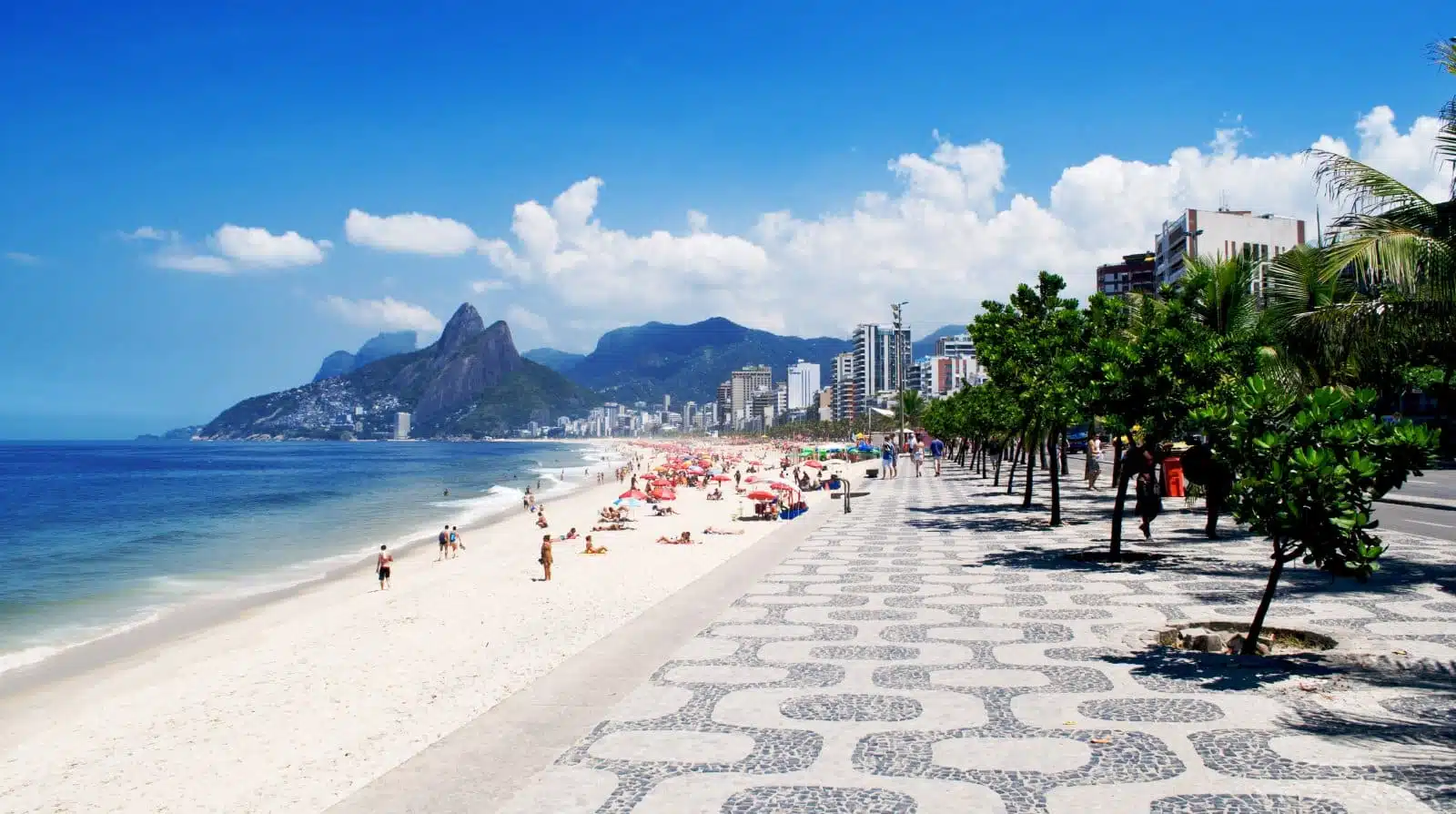
Image Credit: Shutterstock / Catarina Belova
The world-famous beaches of Copacabana and Ipanema epitomize Rio’s beach culture, with their vast stretches of golden sand, vibrant boardwalks, and the rhythmic waves of the Atlantic. Copacabana’s promenade, lined with kiosks, restaurants, and bars, is bustling with activity day and night. Ipanema, immortalized in the bossa nova song “The Girl from Ipanema,” offers a more upscale atmosphere, with chic cafes and sophisticated boutiques. Both beaches are melting pots of culture, where locals and tourists gather to enjoy the sun, sea, and sand.
Insider’s Tip: Explore the local markets that set up on the weekends along the beachfronts. They are great places to find handmade crafts, traditional Brazilian bikinis, and souvenirs.
4. The Santa Teresa Neighborhood
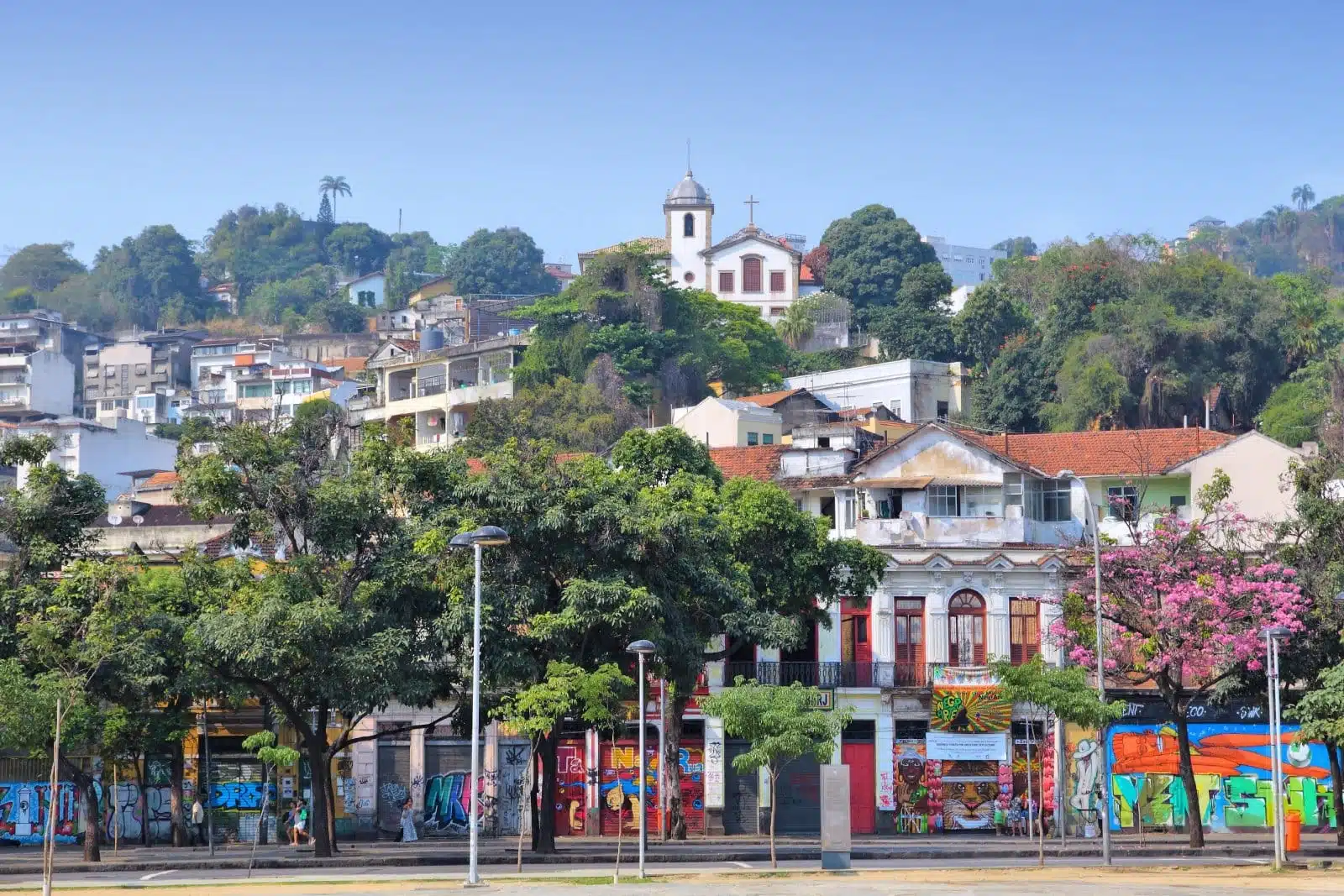
Image Credit: Shutterstock / Tupungato
Santa Teresa, a bohemian enclave perched on the hills above the city, is known for its winding streets, colonial mansions, and vibrant arts scene. This neighborhood offers a glimpse into Rio’s past, with its historic tramway, eclectic boutiques, and art studios. Santa Teresa is also home to some of Rio’s most charming restaurants and bars, offering stunning city views and a cozy atmosphere.
Insider’s Tip: Visit the Parque das Ruínas for one of the best panoramic views of Rio. The park, which includes the ruins of a mansion, hosts cultural events and exhibitions.
5. The Selarón Steps (Escadaria Selarón)
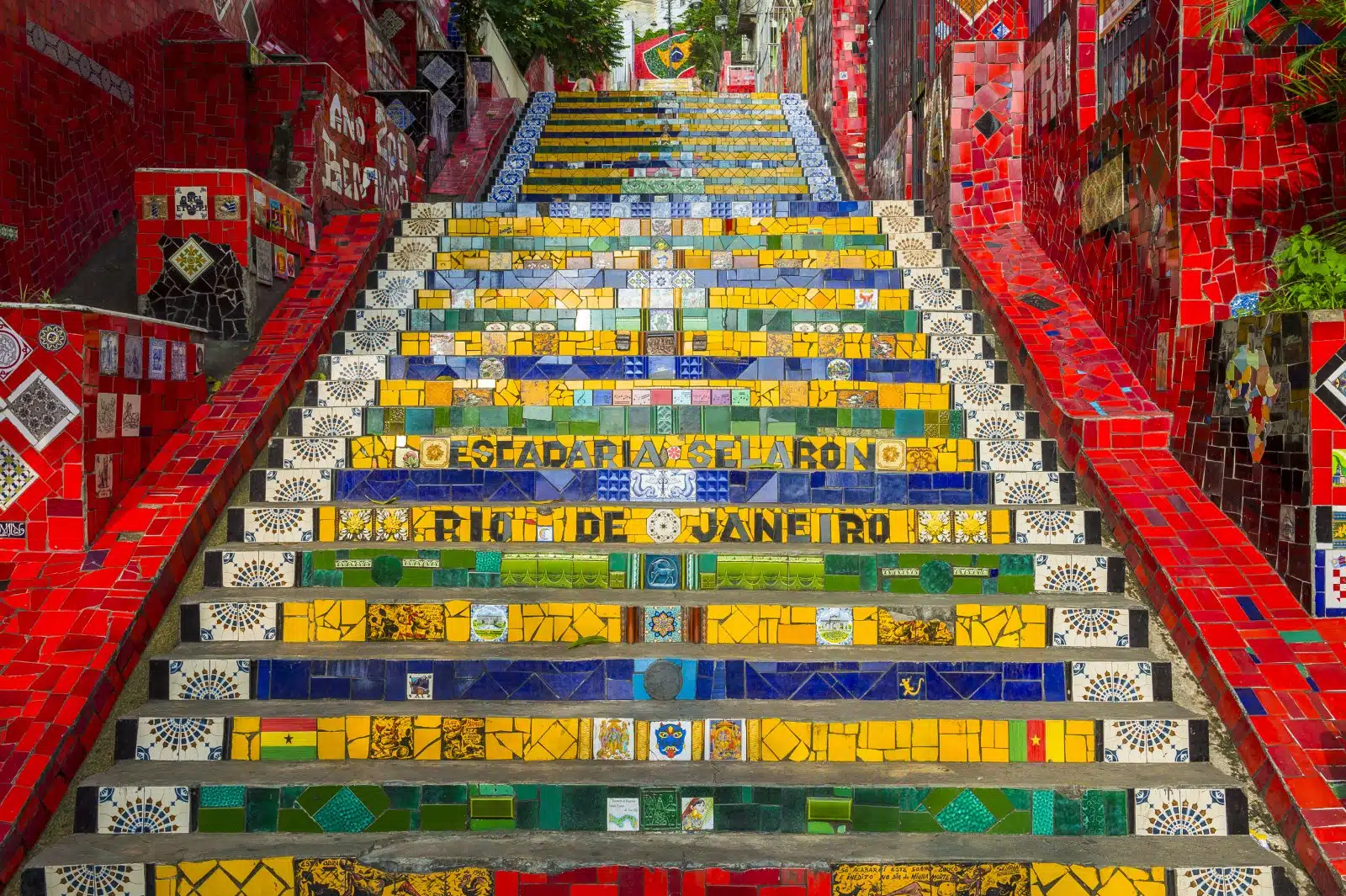
Image Credit: Shutterstock / lazyllama
The Selarón Steps are a set of world-famous mosaic stairs created by Chilean-born artist Jorge Selarón. The steps, spanning 125 meters and covered in over 2,000 tiles from more than 60 countries, are a colorful tribute to the Brazilian people. Located in the Lapa neighborhood, this artwork has become one of Rio’s most photographed sites, symbolizing the city’s eclectic nature.
Insider’s Tip: For the best photos, visit early in the morning when the steps are less crowded. Don’t hesitate to explore the surrounding Lapa neighborhood, known for its nightlife and samba clubs.
6. The Rio Carnival
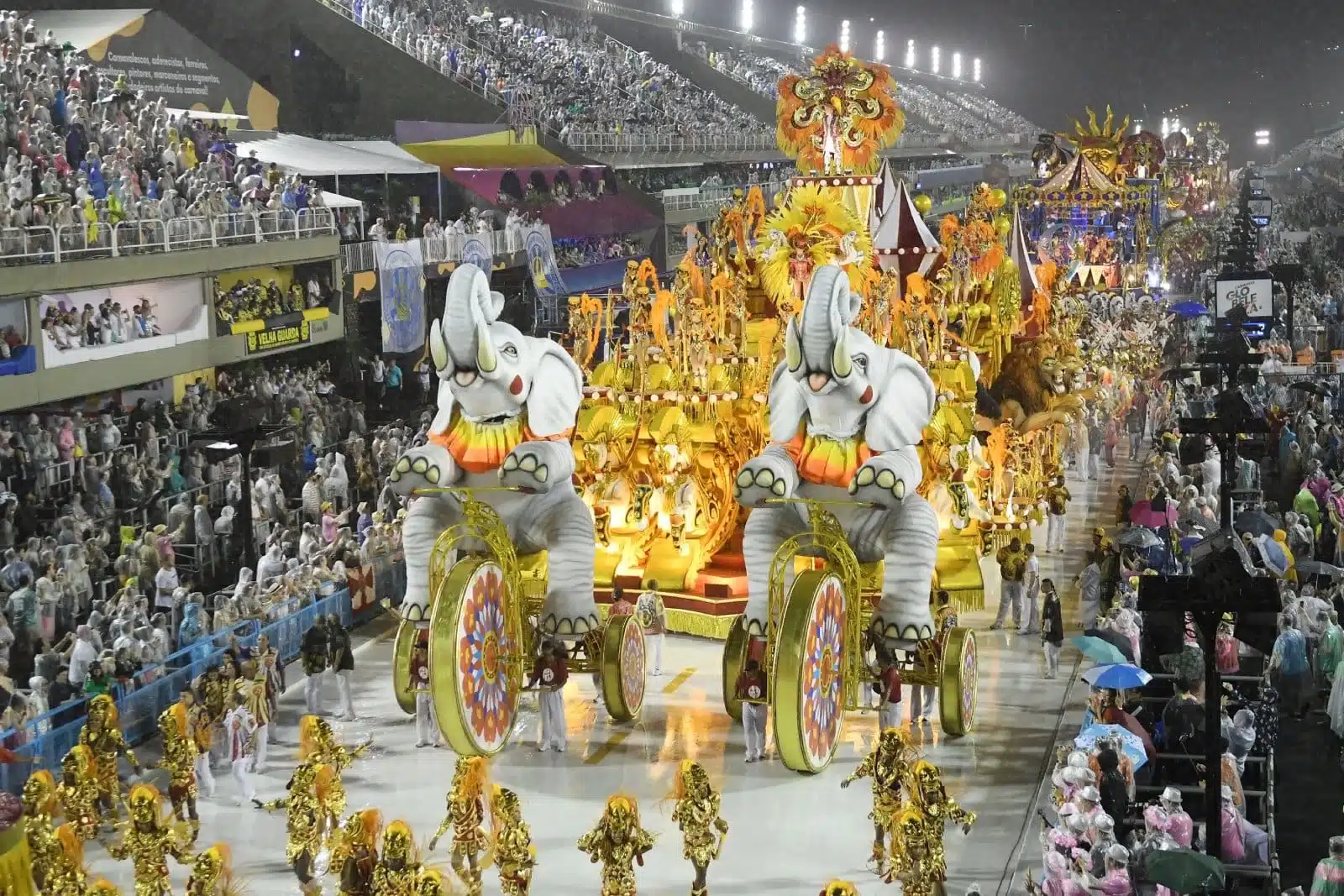
Image Credit: Shutterstock / A.PAES
The Rio Carnival is the epitome of the city’s vibrant culture, attracting millions of visitors from around the globe. This world-famous festival, held before Lent, is a spectacle of samba, elaborate costumes, and exuberant parades. The Sambadrome Marquês de Sapucaí is the epicenter of the carnival, where samba schools compete in one of the most dazzling music and dance displays on the planet.
Insider’s Tip: To fully experience the carnival, consider purchasing tickets to the Sambadrome parade in advance. For a more immersive experience, join a samba school and participate in the parade.
7. The Tijuca National Park

Image Credit: Shutterstock / vitormarigo
Tijuca National Park, one of the largest urban rainforests in the world, offers a lush escape from the city’s hustle and bustle. The park features hundreds of plant and wildlife species, picturesque waterfalls, and scenic trails leading to breathtaking viewpoints. It’s a haven for outdoor enthusiasts, offering hiking, rock climbing, and bird watching activities.
Insider’s Tip: Don’t miss the Cascatinha Taunay, the park’s highest waterfall, and the Vista Chinesa, an ornate Chinese-style gazebo offering spectacular views of Rio.
8. The Museum of Tomorrow (Museu do Amanhã)
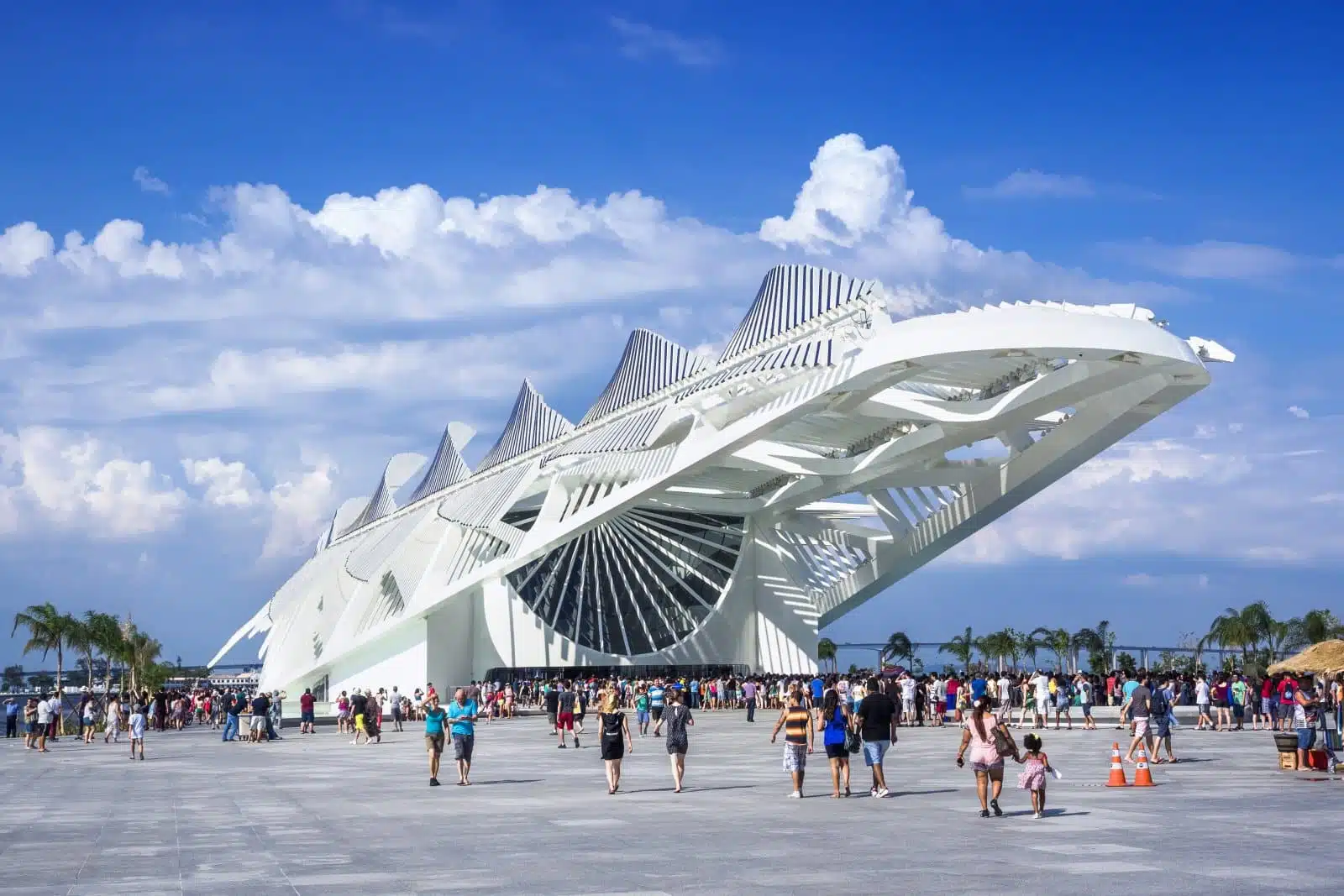
Image Credit: Shutterstock / R.M. Nunes
The Museum of Tomorrow is a striking example of Rio’s commitment to sustainability and innovation. Designed by architect Santiago Calatrava, the museum explores the possibilities of a sustainable future, combining science, technology, and art. Its interactive exhibits encourage visitors to contemplate the impact of their actions on the planet, making it a thought-provoking destination for all ages.
Insider’s Tip: After visiting the museum, take a stroll along the revitalized Porto Maravilha waterfront area, where the museum is located. The area offers beautiful views of the bay and the Rio-Niterói Bridge.
9. The Maracanã Stadium
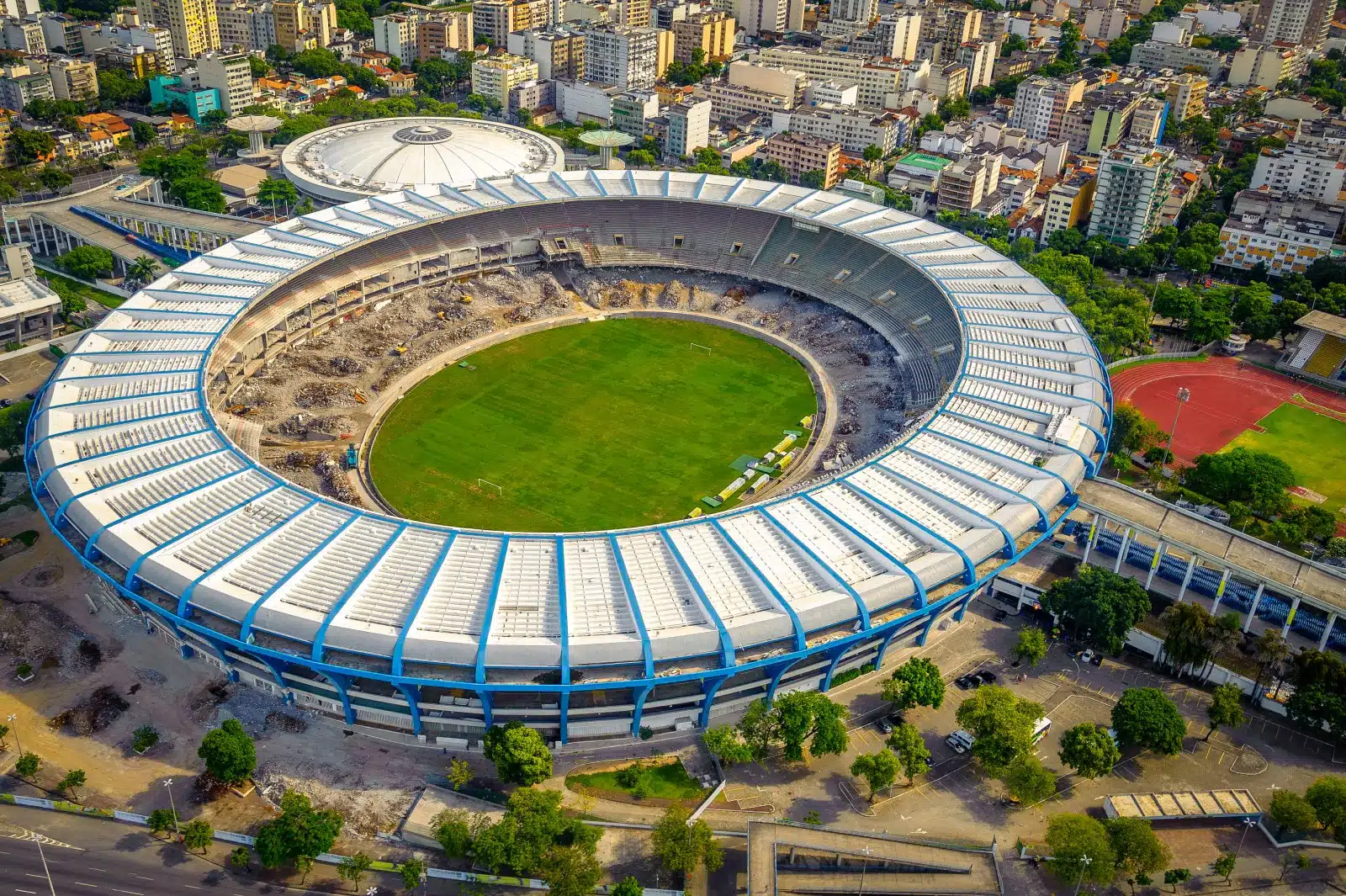
Image Credit: Shutterstock / Celso Diniz
The Maracanã Stadium is a temple of football, hosting some of the most significant matches in the history of the sport, including two FIFA World Cup Finals. A visit to Maracanã explores Brazil’s football culture, with stadium tours providing access to the locker rooms, seating areas, and the pitch itself.
Insider’s Tip: Try to catch a match between local teams Flamengo, Fluminense, Botafogo, or Vasco da Gama to experience the passionate atmosphere of Brazilian football.
10. The Metropolitan Cathedral of Saint Sebastian
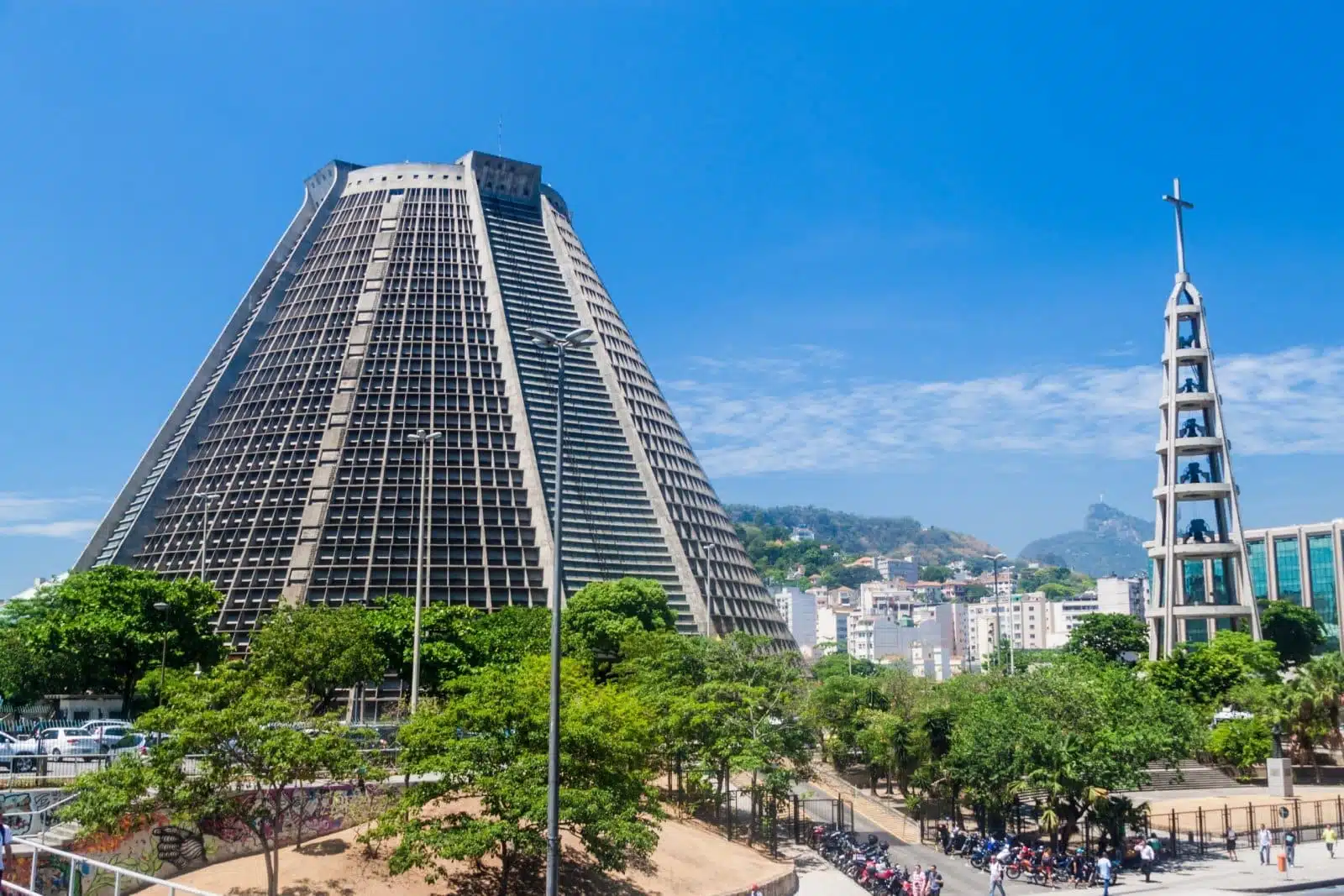
Image Credit: Shutterstock / Matyas Rehak
The Metropolitan Cathedral of Saint Sebastian, with its distinctive conical shape and stained glass windows, is a modern architectural feat. The cathedral’s interior can hold up to 20,000 people, and its design is inspired by Mayan pyramids, symbolizing the connection between the divine and the earthly.
Insider’s Tip: Attend a mass to experience the cathedral’s remarkable acoustics and the serene ambiance created by the light filtering through the stained glass.
11. The Feira de São Cristóvão

Image Credit: Shutterstock / Fabio Tirado
The Feira de São Cristóvão is a vibrant market celebrating Northeastern Brazilian culture within Rio. This permanent fair offers a taste of the Northeast’s cuisine, music, dance, and crafts. It’s a lively place where visitors can enjoy forró dance, sample traditional dishes like acarajé and baião de dois, and shop for handmade goods.
Insider’s Tip: Plan to visit on a weekend when live music performances and dance events are most frequent, offering an authentic experience of Northeastern Brazilian culture.
12. The Rodrigo de Freitas Lagoon
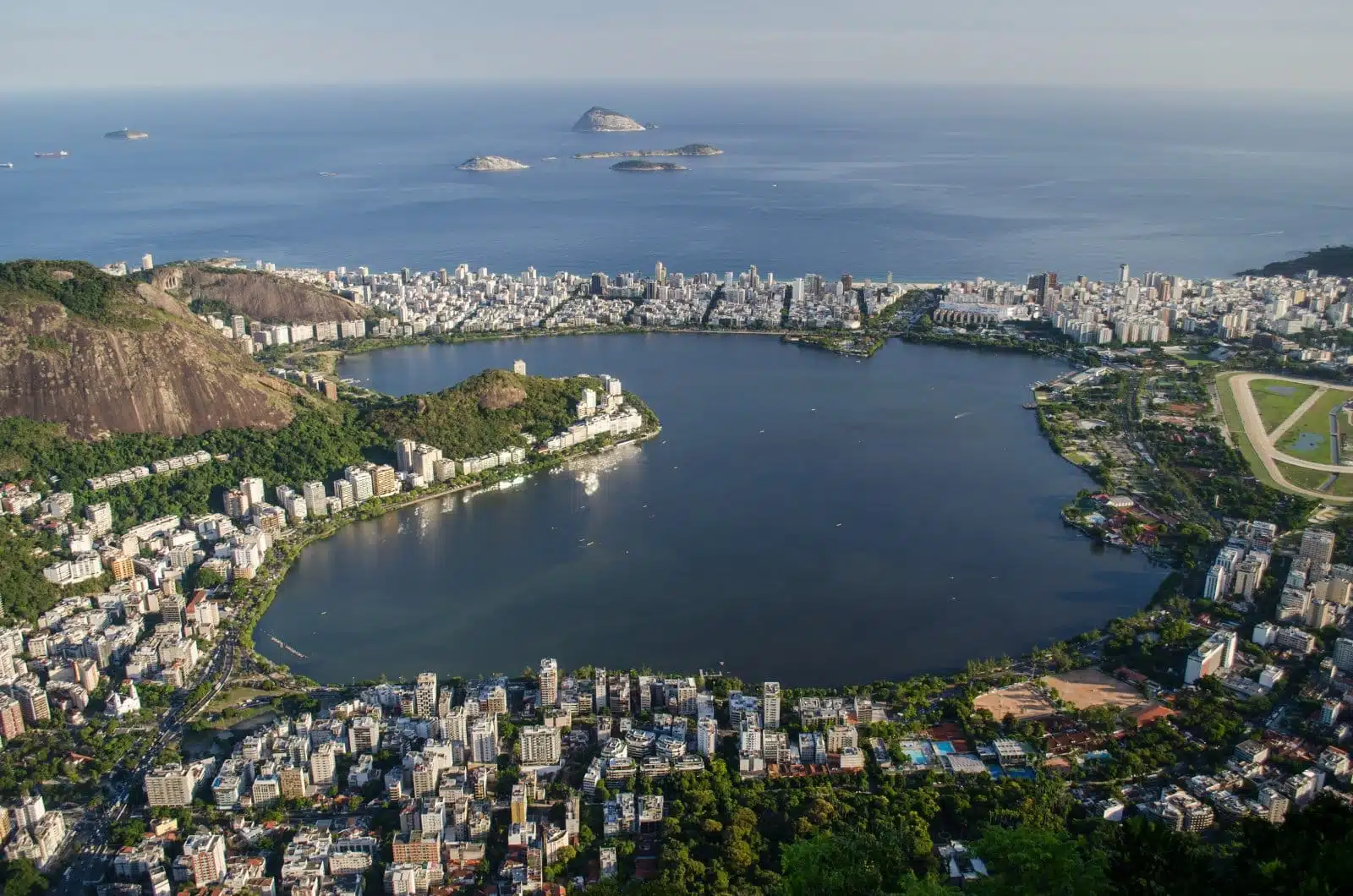
Image Credit: Shutterstock / vitormarigo
The Rodrigo de Freitas Lagoon is a serene body of water surrounded by Rio’s lush cityscape. The lagoon is a popular spot for jogging, cycling, and picnicking, with a path encircling its perimeter. Paddleboats are available for rent, offering a leisurely way to enjoy the scenic views of the surrounding mountains and Christ the Redeemer.
Insider’s Tip: Visit during the Christmas season to see the floating Christmas tree, a spectacular light display that has become a cherished holiday tradition in Rio.
When to Travel

Image Credit: Pexels / Rodrigo Pederzini
The ideal time to visit Rio de Janeiro largely depends on what you want to experience. The city’s peak tourist season is during its summer months, from December to March, coinciding with the famous Rio Carnival and New Year’s celebrations. This period offers hot, sunny days ideal for beach-going and outdoor festivals but comes with higher prices and larger crowds.
For those seeking more comfortable weather and fewer tourists, the shoulder seasons of spring (September to November) and autumn (March to May) provide mild temperatures and lower accommodation rates. These months are perfect for exploring outdoor attractions like Tijuca National Park and the botanical gardens without the intense heat of summer.
Winter, from June to August, is the low season in Rio. The weather is cooler and can be more variable, with occasional rain, but it’s still warm enough to enjoy the beaches. This season offers the best deals on hotels and flights, making it an attractive option for budget-conscious travelers.
How to Get There

Image Credit: Shutterstock / Gustavo Frazao
By Air
Two major airports serve Rio de Janeiro. Galeão International Airport (GIG) is the main gateway for international flights, while Santos Dumont Airport (SDU) handles domestic flights and some flights from neighboring countries. Galeão is about 20 kilometers from downtown Rio, and Santos Dumont is conveniently located near the city center.
From Galeão International Airport to the City
Visitors can take taxis, ride-sharing services, or airport shuttle buses to reach their accommodations. The BRT (Bus Rapid Transit) system also connects the airport to various parts of the city, including a link to the metro system for easy access to popular tourist areas.
From Santos Dumont Airport to the City
Being closer to the city center, Santos Dumont offers easy access via taxi, ride-sharing services, and public buses. It’s also within walking distance of the VLT Carioca light rail, which connects to the central business district and the bus and metro systems.
By Road
Rio is well-connected by road to other major cities in Brazil. Long-distance buses arrive at and depart from the Novo Rio Bus Terminal, linking Rio to cities nationwide. The terminal is connected to the city’s public transport system, making it easy to reach your final destination.
By Sea
Rio’s port occasionally welcomes international cruise ships. Passengers disembark at Pier Mauá, located in the revitalized Porto Maravilha area, close to downtown and cultural attractions like the Museum of Tomorrow and the MAR (Rio Art Museum).
Whether arriving by air, road, or sea, Rio de Janeiro’s comprehensive public transport system, including metro, buses, and light rail, makes navigating the city straightforward for visitors.
The Bottom Line

Image Credit: Pexels / Rodrigo Pederzini
Rio de Janeiro’s vibrant culture, breathtaking landscapes, and dynamic spirit offer an unparalleled experience for travelers seeking depth and diversity in their journeys. As you explore the city’s iconic landmarks, immerse yourself in its rich culture, and engage with the warmth of its people, you’ll discover the soul of Rio. Each destination and activity provides a unique perspective on what makes this city truly remarkable.
More From The Green Voyage
Top 10 Trending Travel Destinations 2024
6 Essential Banking Apps for International Travel – Managing Your Finances on the Go
Traveling With Kids – 10 Tips to Create Memorable Family Holidays
The post The Vibrant Culture of Rio de Janeiro 2024 first appeared on The Green Voyage.
Featured Image Credit: Shutterstock / R.M. Nunes.
For transparency, this content was partly developed with AI assistance and carefully curated by an experienced editor to be informative and ensure accuracy.
Tips for Trip Success
Book Your Flight
Find an inexpensive flight by using Kayak, a favorite of ours because it regularly returns less expensive flight options from a variety of airlines.
Book Your Hotel or Special Accommodation
We are big fans of Booking.com. We like their review system and photos. If we want to see more reviews and additional booking options, we go to Expedia.
You Need Travel Insurance!
Good travel insurance means having total peace of mind. Travel insurance protects you when your medical insurance often will not and better than what you get from your credit card. It will provide comprehensive coverage should you need medical treatment or return to the United States, compensation for trip interruption, baggage loss, and other situations.Find the Perfect Insurance Plan for Your Trip
